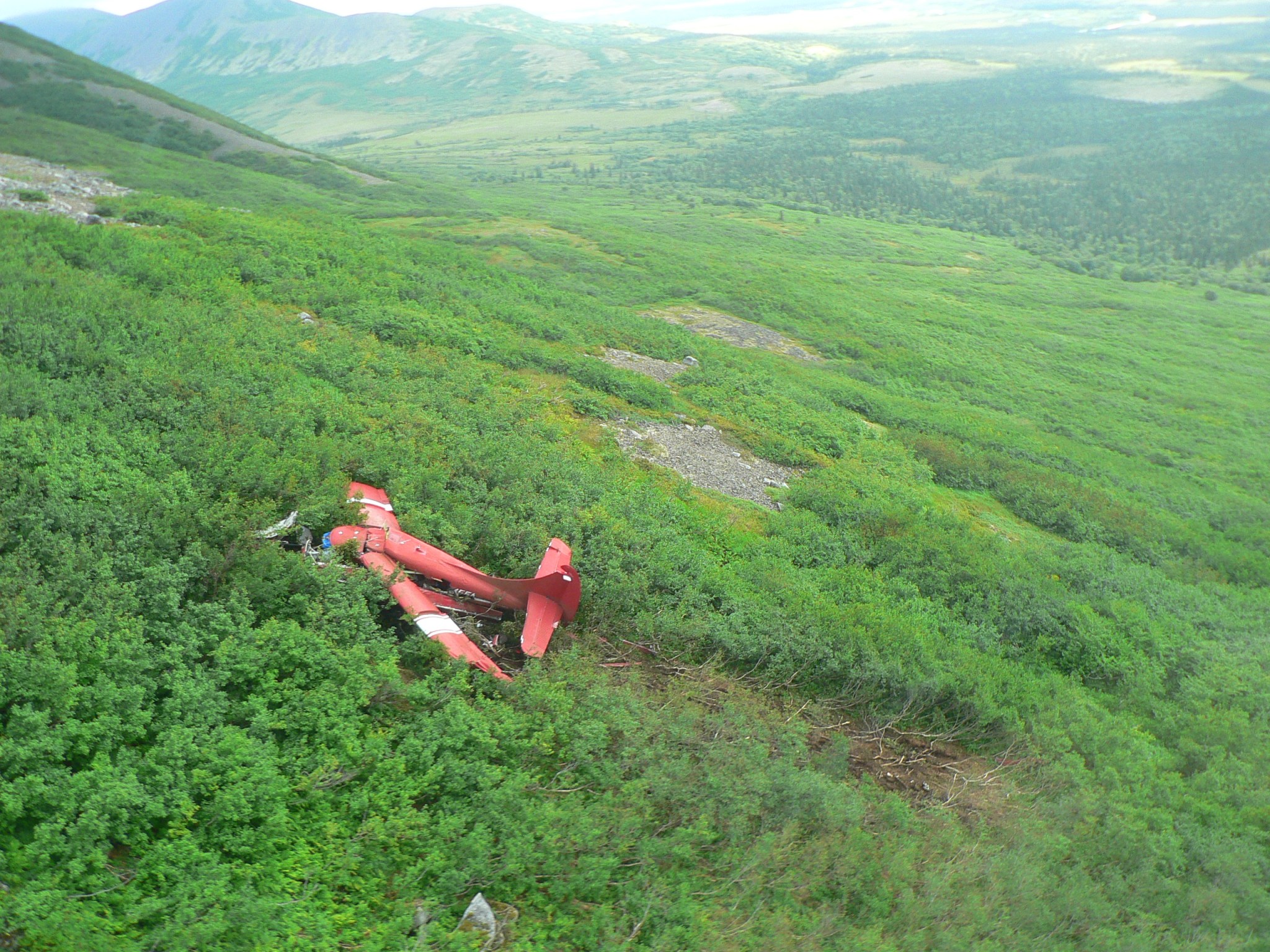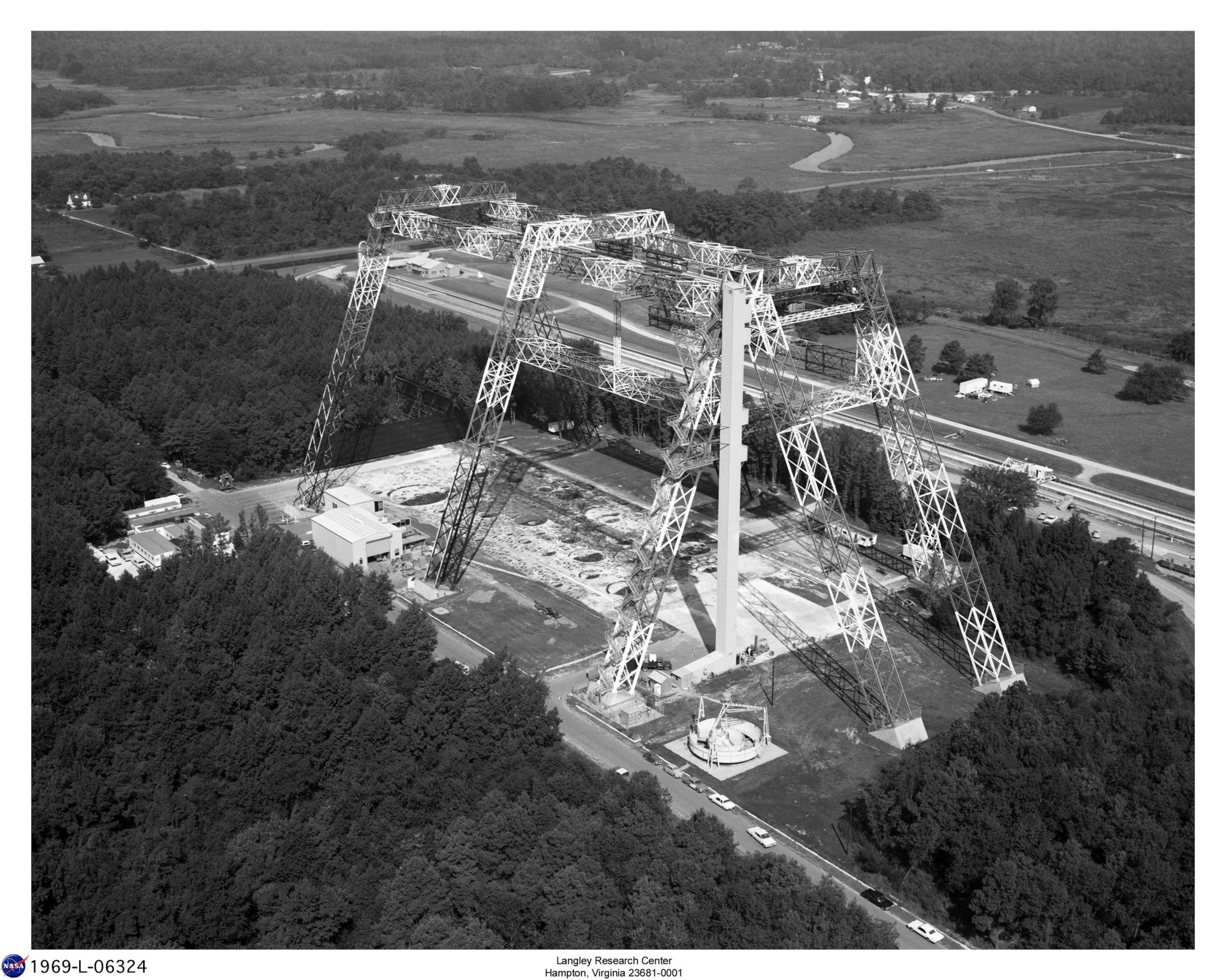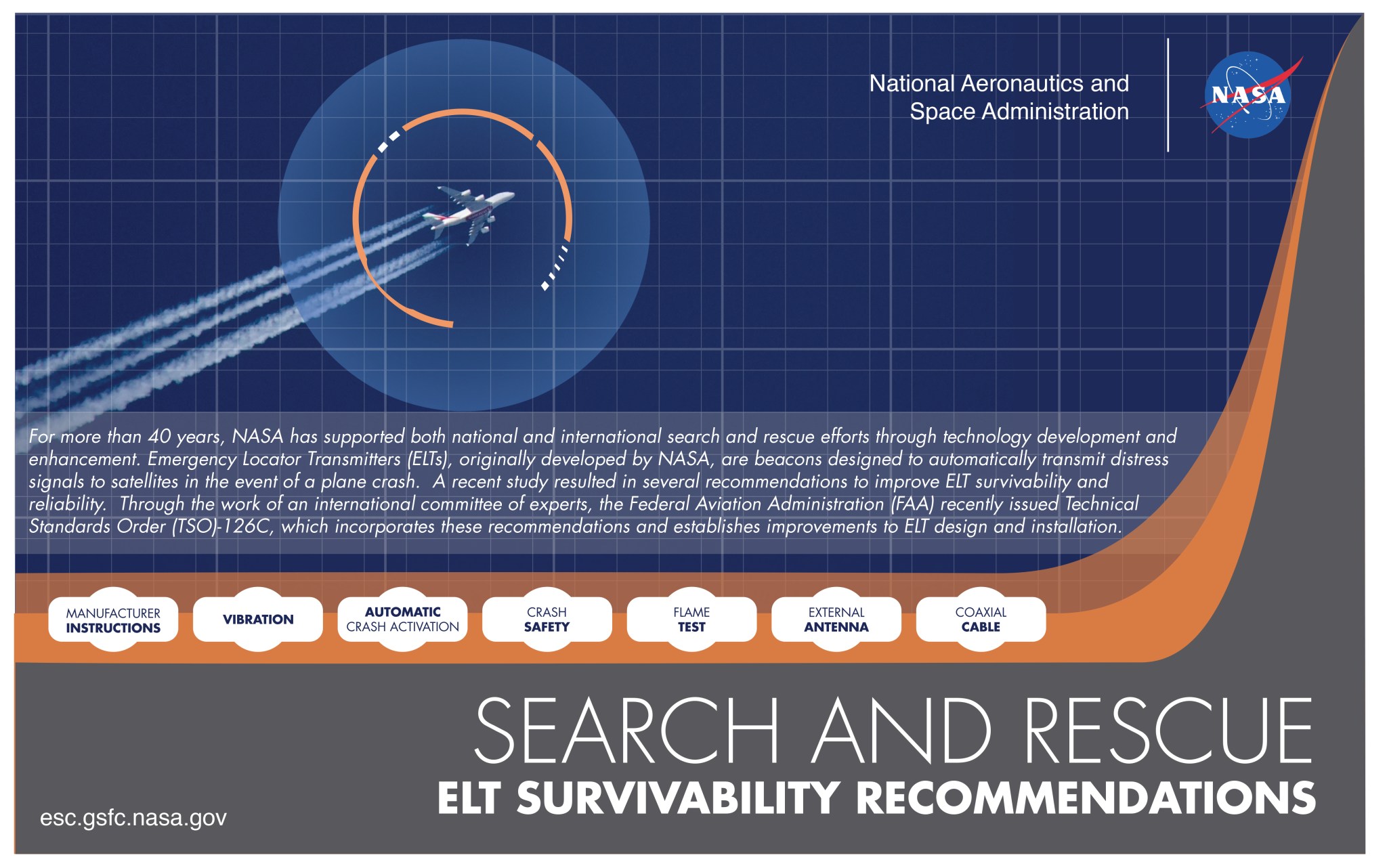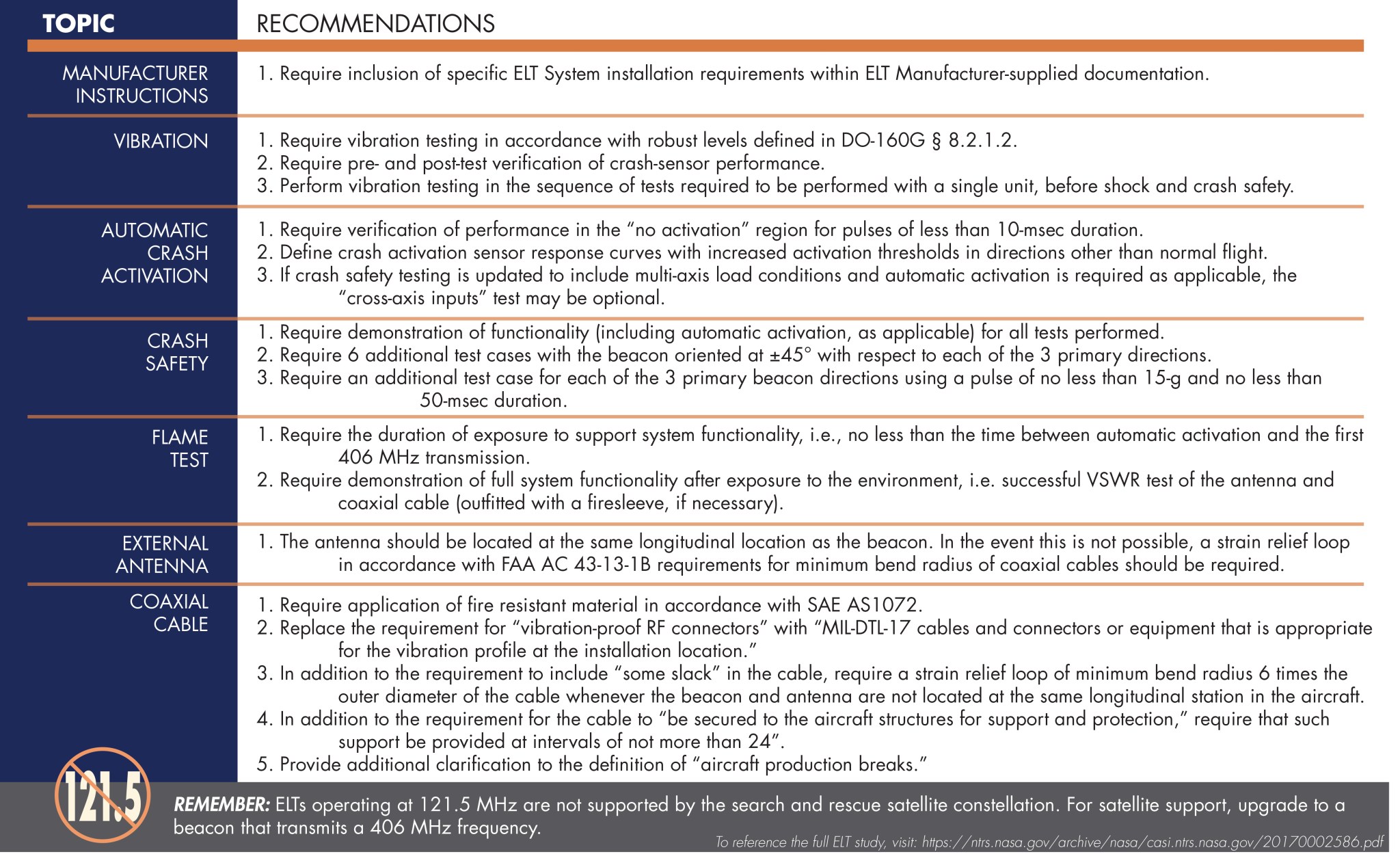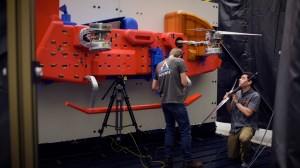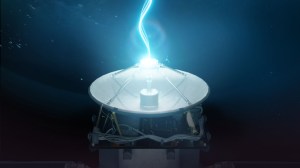The Federal Aviation Administration (FAA) has adopted NASA’s Search and Rescue (SAR) office’s recommendations regarding the installation and maintenance of Emergency Locator Transmitters (ELTs), the NASA-designed, satellite-aided search and rescue beacons installed in planes. These recommendations will improve aviation safety and result in more lives saved by the international satellite-aided search and rescue system.
In 2010, a seaplane returning from a fishing trip crashed just northwest of Aleknagik, Alaska. Five of the nine people aboard died and two were injured. Ted Stevens, a former U.S. Senator from Alaska, was among the fatalities. Among the survivors was former NASA administrator Sean O’Keefe.
Because the plane’s ELT failed to activate, O’Keefe and the other survivors had to wait 12 hours for search and rescue crews to find them. Had the beacon functioned correctly, first responders would have known of the incident and the location of the crash within minutes.
This accident galvanized the search and rescue community, placing a renewed focus on ELT safety and performance at NASA.
“The SAR office had long recognized the need for more research into aviation beacons,” said SAR mission manager Lisa Mazzuca, “but the tragic loss of Senator Stevens and the harrowing experience of administrator O’Keefe put the lifesaving nature of our work into sharp focus.”
The SAR office thoroughly reviewed thousands of aviation crash reports, performing a comprehensive study of ELT nonperformance. Their research determined that about 58 lives were lost each year due to ELT failure.
Then, the SAR office utilized existing aeronautics expertise at NASA to study ELTs in simulated crash conditions. At the culmination of their research, the office conducted three controlled airplane crashes at the Landing and Impact Research Facility, better known as the “gantry,” at NASA’s Langley Research Center in Hampton, Virginia.
The gantry, a national historic landmark, became operational in 1965, training astronauts Neil Armstrong and Buzz Aldrin for the Apollo Moon landing in 1969. Since then, the facility has served as a testbed for numerous spacecraft, airplanes, fuel systems and even racecars, providing engineers with crucial impact data and crash testing capabilities.
At the gantry, the SAR team hoisted three decommissioned Cessna 172 aircraft, a common general aviation airframe, to varying heights and crashed them onto a slab of dirt. The planes were dropped in three configurations: head first, with the plane pitched down, from 100 feet; tail first, with the plane pitched up, from 100 feet; and a hard landing at a normal pitch from 82 feet.
In each of the aircraft, the SAR team installed numerous ELTs using varying methods. The team studied each one to determine how the crash scenario reduced their performance, or “survivability.” Additionally, crash dummies in the planes cockpits would confirm that each crash was survivable, showing the varying degrees of distress that pilots would be in after the event.
The team painted black dots on the main body, or fuselage, of each plane. A high-speed camera taking 500 images per second used these dots to provide computers the information needed to generate models of the impacts with a technique called full field photogrammetry.
“From this ELT survivability study, the SAR team learned that a few adjustments to installation can result in greatly improved ELT performance,” said SAR Deputy Mission Manager Tony Foster. “Following the guidelines we developed, users are best prepared for a worst-case scenario.”
The team found that an ELT mounted to the skin of the plane could easily shear off, unplugging the unit from the cabling that attaches the ELT to its antenna on the outside of the plane. Mounting the ELT to a more rigid structure decreases the likelihood of shear and cable detachment.
A cable that crossed the production breaks of the plane was also likely to unplug from the ELT. Adding relief loops to the cabling allows the cable the slack it needed to survive this scenario.
Additionally, the SAR team found that the cables were susceptible to fire damage in the aftermath of a crash. The addition of an inexpensive fireproof sleeve to the cabling adds vital minutes of ELT transmission in the event of a fire.
For manufacturers, the SAR team recommended testing processes more representative of a real crash scenario, making sure that beacons respond to the correct amount of crash forces in any direction. This method of testing also reduces the number of false ELT activations due to hard landings, which allows rescue forces to focus their resources on users in distress.
Download ELT Survivability Guidance Postcard as PDF (14.2 MB)
The SAR team published these installation best practices alongside technical recommendations for commercial ELT manufacturers in February 2017. In December 2018, the Radio Technical Commission for Aeronautics, an organization dedicated to developing consensus among commercial and governmental interests in aviation, adopted these recommendations. In March 2019, the FAA followed suit, changing its ELT technical standard order, (the required minimal performance standards,) to reflect the SAR team’s recommendations.
“By accepting NASA’s guidance, as the FAA has its own regulatory authority and is not bound by NASA ‘guidance,’ the FAA cements best practices for ELT testing, installation and maintenance,” said Foster. “Commercial and private ELT users will be better informed on how to install their beacons, improving outcomes in the unfortunate event of a crash and, ultimately, saving lives.”
In addition to their research into ELT survivability, the SAR office has been developing second-generation distress beacons that take full advantage of a new constellation of satellite-based search and rescue instruments. These beacons will offer greatly improved location accuracy and detection times for users worldwide, including Artemis astronauts returning from their missions to the Moon. Miniaturized second-generation beacons will be placed on their life preservers to ensure accurate location services upon splashdown and egress from the Orion capsule.
“These beacons will provide near instantaneous beacon detection and an order of magnitude improvement in location accuracy to users anytime, anywhere on Earth.”
George Theodorakos
SAR Chief Engineer
“Our second-generation beacons will offer all users, including NASA astronauts, with the most robust distress location services possible,” said SAR Chief Engineer George Theodorakos. “These beacons, operating with our new satellite constellations, will provide near instantaneous beacon detection and an order of magnitude improvement in location accuracy to users anytime, anywhere on Earth.”
NASA’s SAR office is a project of the Exploration and Space Communications projects division at the agency’s Goddard Space Flight Center in Greenbelt, Maryland, and receives programmatic oversight from NASA’s Space Communications and Navigation program office at NASA Headquarters in Washington. The SAR office serves as the technology development arm of the international satellite-aided search and rescue program, Cospas-Sarsat, a 40-nation effort to provide accurate, timely and reliable distress alert and location data to search and rescue authorities.























